Two path 1 and 2 are shown in figure. If the change in internal energies are , and for path 1 and 2 respectively, then 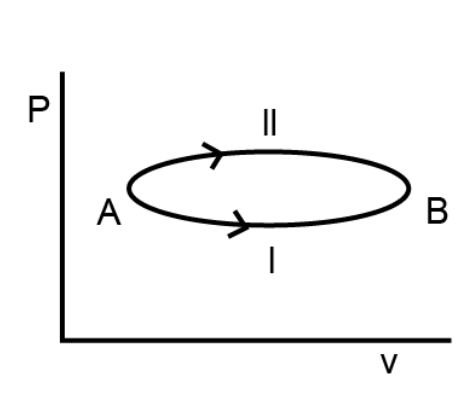
The correct Answer is:A
Step by step video & image solution for Two path 1 and 2 are shown in figure. If the change in internal energies are U_1, and U_2 for path 1 and 2 respectively, then by Physics experts to help you in doubts & scoring excellent marks in Class 12 exams.
Updated on:21/07/2023Topper's Solved these Questions
Similar Questions
In the adjoined figure the indicator diagram of an ideal thermodynamic gas system is represented. If the change in internal energy along the path acb is 10 calorie then change in internal energy along the path bda will be

View SolutionA system is taken from state A to state B along two different paths 1 and 2 . The heat absorbed and work done by the system along these two paths are Q1 and W1 and W2 respectively.
View Solution
Knowledge Check
In the figure shown the key is switched on at t=0. Let l1 and l2 be the currents through inductors having self inductances L1 and L2 at any time t respectively. The magnetic energy stored in the inductors 1 and 2 be U1 and U2. Then U1U2 at any instant of time is:
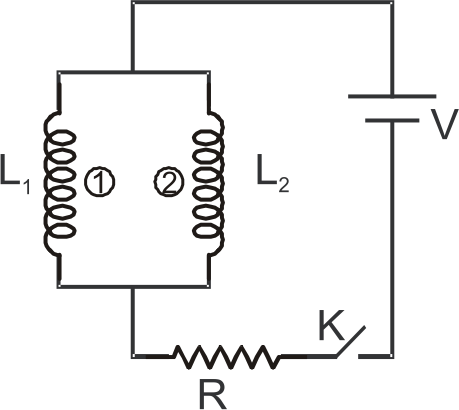 AL1L2BL2L1CI1I2DI2I1
AL1L2BL2L1CI1I2DI2I1Two capacitors of equal capacitance (C1=C2) are shown in the figure. Initially, while the switch S is open, one of the capacitors is uncharged and the other carries charge Q0. The energy stored in the charged capacitor is U0. Sometimes after the switch is colsed, the capacitors C1andC2 carry charges Q1andQ2, respectively, the voltages across the capacitors are V1andV2, and the energies stored in the capacitors are U1andU2. Which of the following statements is INCORRECT ?
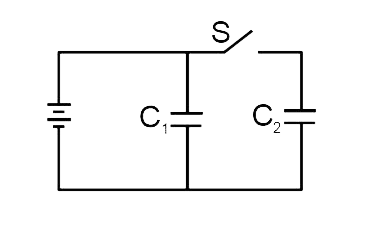 AQ0=12(Q1+Q2)BQ1=Q2CV1=v2DU0=U1+U2
AQ0=12(Q1+Q2)BQ1=Q2CV1=v2DU0=U1+U2An ideal gas is taken from state 1 to state 2 through optional path A,B,CandD as shown in the PV diagram. Let Q,WandU represent the heat supplied, work done and change in internal energy of the gas respectively.
Then,
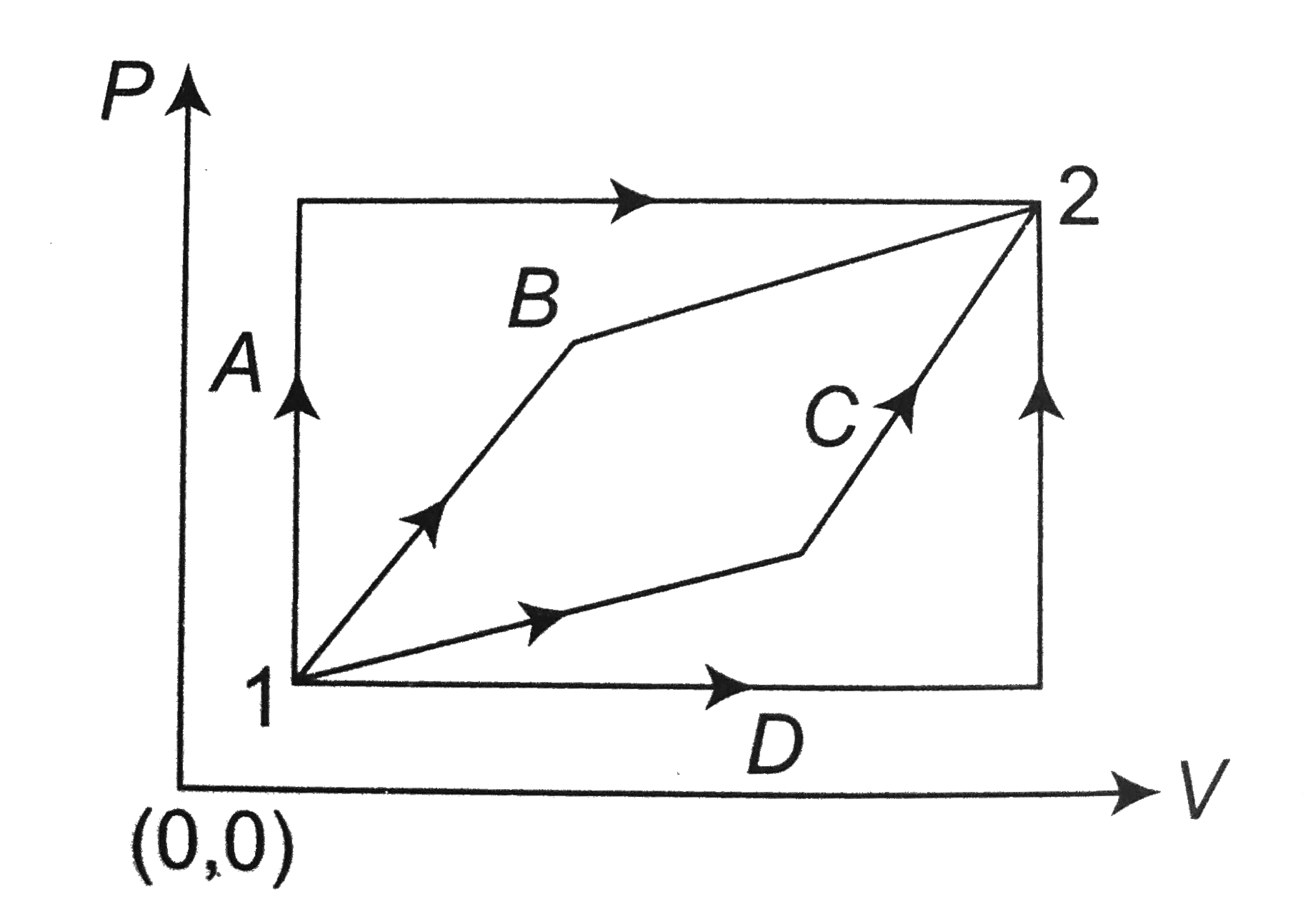 AQA−Q(D)=WA−W(D)BQB−W(B)>QC−W(C)CWA<W(B)<WC−W(D)DQA<Q(B)<QC−Q(D)
AQA−Q(D)=WA−W(D)BQB−W(B)>QC−W(C)CWA<W(B)<WC−W(D)DQA<Q(B)<QC−Q(D)
Following figure shows two process A and B for a gas. If ΔQA and ΔQB are the amount of heat absorbed by the system in two case, and ΔUA and ΔUB are changes in internal energies, respectively, then :
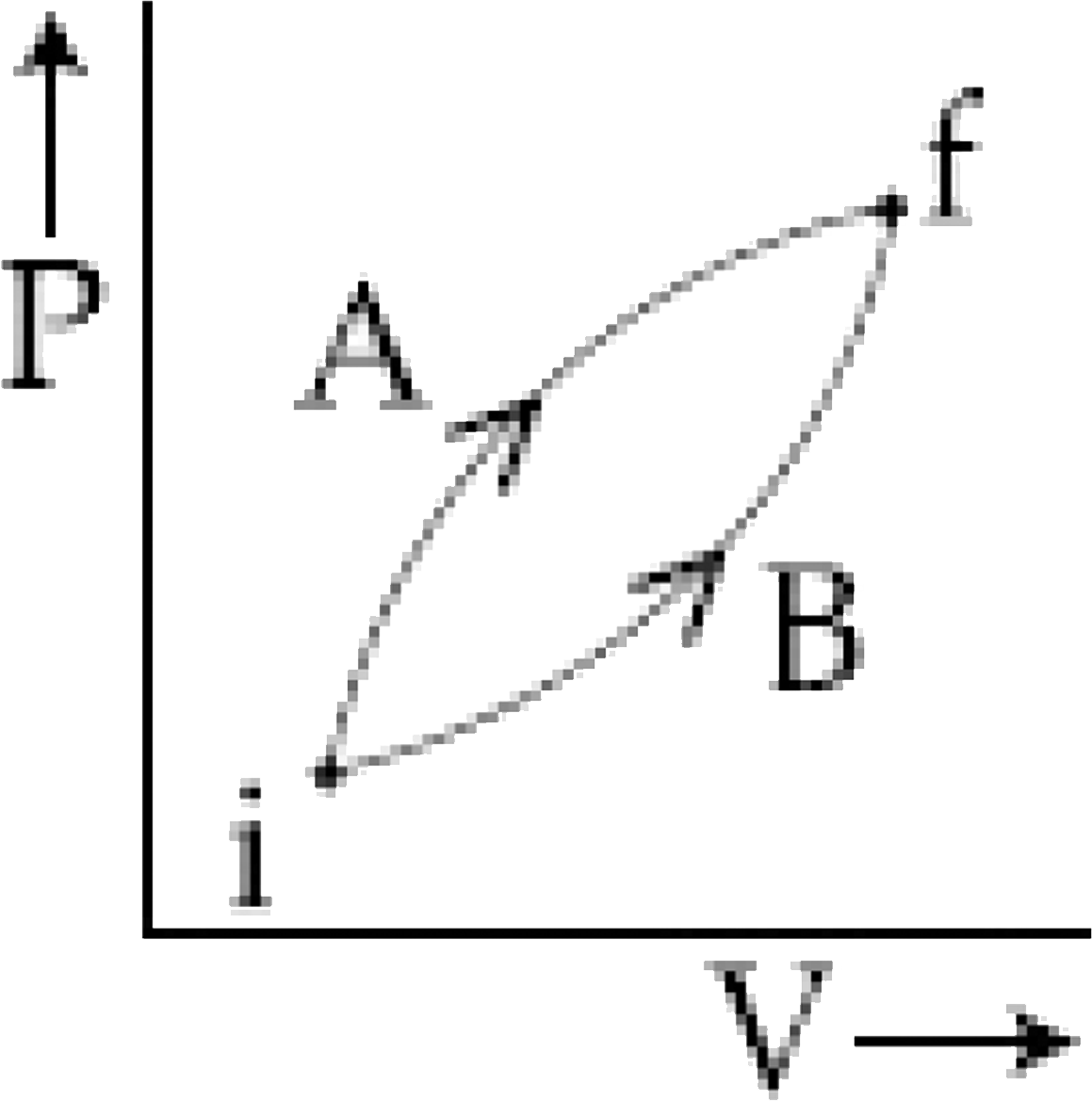
View SolutionIn the figure shown in key is switched on a t = 0. Let I1 and I2 be the current through inductors having self inductances L1 and L2 at any time t respectively. The magnetic energy stored in the inductors 1 and 2 be U1 and U2. Then U1/U2 at any instant of time is
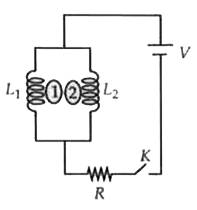
View SolutionLet ΔU1 and ΔU2 be the changes in internal energy of an ideal gas in the processes A and B then
View SolutionA given mass of gas expands from state A to state B by three paths 1, 2 and 3 as shown in the figure
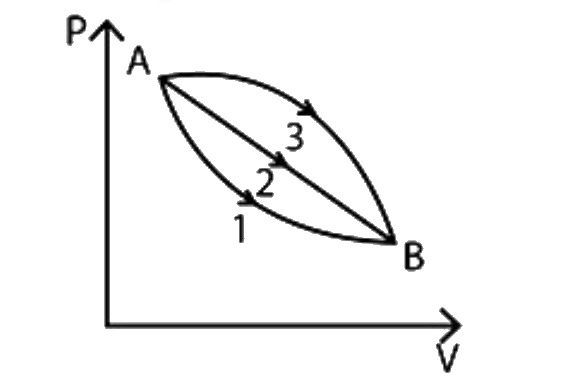
If w1,w2andw3 respectively are be the works done by the gas along three paths, then
View SolutionThe molecular velocities of two gases at same temperature are u1 and u2, their masses are m1 and m2 respectively, which of the following expression is correct ?
View Solution
